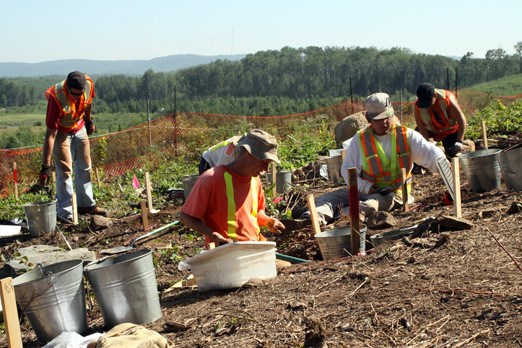With construction underway on the cloverleaf at the intersection of Hodder Avenue and Highway 11-17, a group of archeologists are uncovering 9,000-year-old artifacts on land slated to be cleared for the highway project.
The team has found flakes of several materials used in tool production, primarily taconite. Project archeologist Dave Norris said they’ve come across mostly remnants of stone tool production.
The flakes are from projectile points, or spearheads, which is what they expect to find, said Norris.
“The mentality is they’ve created those tools and they take them with them when they leave the site,” he said. “Essentially what we’re looking at is the byproducts, the garbage left behind.”
The site, located on the southeast corner of the intersection, is similar to the one excavated last year behind the McKenzie Inn further east down the highway. That site is believed to be one of the most significant archeological finds in Northern Ontario.
Norris said the large amounts of taconite found at both sites lead them to believe the artifacts are from the same time period.
“We can’t really say for sure,” he said. “We’re hoping to get some dates from these sites through various methods, just to give us a better idea of the timeframe we’re looking at.”
The team, contracted by Western Heritage, plans to finish the excavation by mid-September. However, that timeline could change depending on what they unearth.
And like the artifacts found at the McKenzie site last summer, Norris said whatever they find at the Hodder site will likely be stored at Lakehead University.
“We hope to make the information available for students to be able to further their archeological careers,” he said.
Sign in or register
- Messages
- Post a Listing
- Your Listings
- Your Profile
- Your Subscriptions
- Your Likes
- Your Business
- Support Local News
- Payment History
Registered Users
Already have an account?
New Users
Create a free account.
